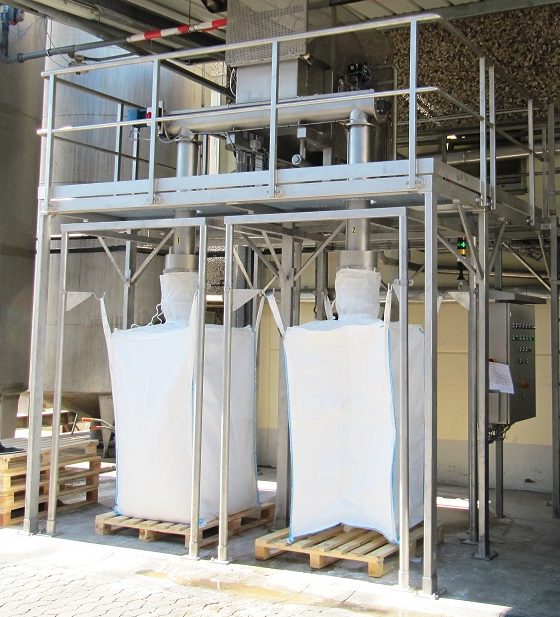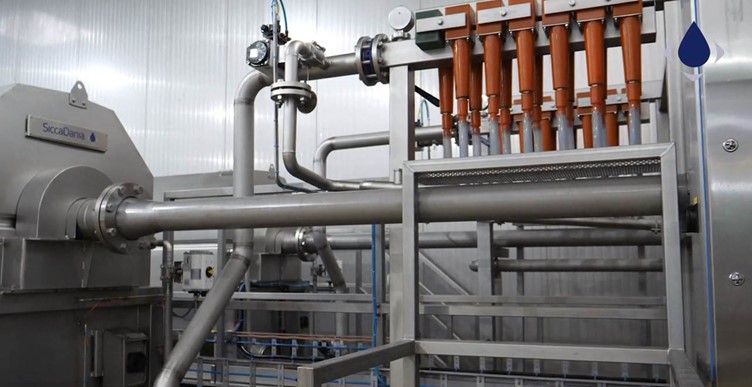Published: 19th of May 2022
The current focus on valorisation and zero-waste production make it increasingly important to process by-products from food production as efficiently as possible. For the potato processing industry, we have created a solution for the recovery of starch from the cutting water.
Wastewater treatment
Our team of experts in Veendam have become the largest supplier of starch recovery plants in the potato processing industry. In the early 1990s, our team, then under the name NIVOBA, implemented the starch recovery process in the French fry industry. The first step into a starch recovery process was a simple question from one of the largest Dutch French fry producers: ‘How can we solve our wastewater problem?’. The challenge was to remove the starch and fibres released during the French fry production from the cutting water before it could be further purified. Equally important in this process is that starch can become a heavy burden in particular steps through the water treatment plants.
Starch Recovery 
From the activities in the chips industry, and later also the chips industry, we have built up more and more knowledge and experience in the field of starch recovery. We continuously optimise the recovery process. Today, we are a leading supplier of robust, high-performance, automatic units to treat process water at the source. It is possible to connect the universally usable system to potato peeling machines, cutting machines and hydro-cutters.
Water consumption
The potato processing industry consumes a lot of freshwater worldwide. With a view to sustainability, more and more companies are looking for solutions to reduce this water consumption. A starch recovery system can make an important contribution to this. By separating the solid parts (potato residue, starch and fibres) from the cutting water as much as possible, it is possible to reuse this water in the processing line. This significantly reduces the consumption of fresh water in production. Additionally, the collected starch is a valuable by-product, which can be used in technical applications, for example as a binder in glue.
Cutting water
In the production of chips, chips and potato flakes, potatoes are reduced to wedges, sticks, slices or cubes by cutting grids or cutting knives. Afterwards, the cut potatoes are washed. During these processes, starch, potato pieces and fibres end up in the cutting water. The central cutting water tank collects this cutting water. These tanks connect to the SiccaDania Recovery System.
SiccaDania Recovery System
From the cutting water tank, the water is pumped to the refining sieves of the SiccaDania Recovery System. The sieve removes all coarse particles from the water while it allows the starchy water to pass through. The coarse particles are suitable as raw materials for animal feed. The starchy water goes to a hydrocyclone unit. The hydrocyclones separate the starch from the water using centrifugal force. Meanwhile, the virtually starch-free water can be reused, i.e. in the cutting system, the potato peeler or the de-sanding step.
Starch
The concentrated starch slurry from the hydrocyclone unit is dewatered. In most cases, a vacuum filter completes this task. The moisture content after this dewatering is about 45%. Below the vacuum filter is a screw conveyor that carries the starch to a big bag filling station. There, bigbag filling stations fill the starch into big bags.
Expertise
The broad expertise and customer-oriented approach guarantee the development of efficient, sustainable solutions. All processes within SiccaDania are subject to the rules of ISO-9001.
Starch recovery benefits
The main features of the SiccaDania Recovery System for starch from cutting water:
- Full valorisation of potato residual flows
- Minimal freshwater consumption
- Maximum reduction of wastewater load
- Minimum cleaning time of the processing lines
- Full integration in the processing line
- Continuous and automatic operation
- Robust, safe and hygienic construction
- Low operating and maintenance costs
The original article from BULK 3 – May 2022


